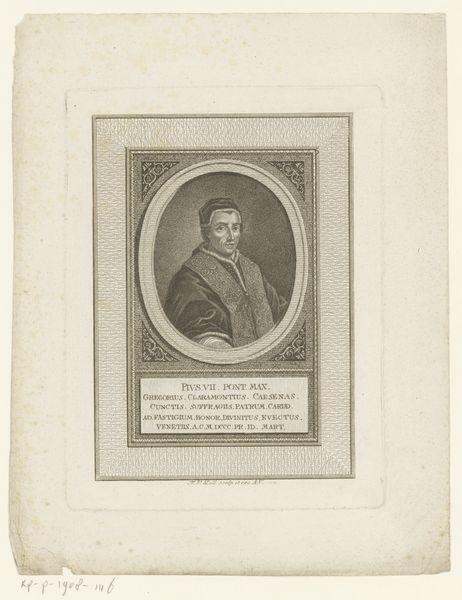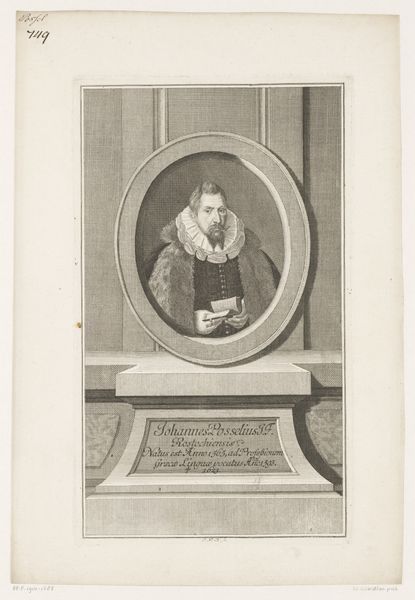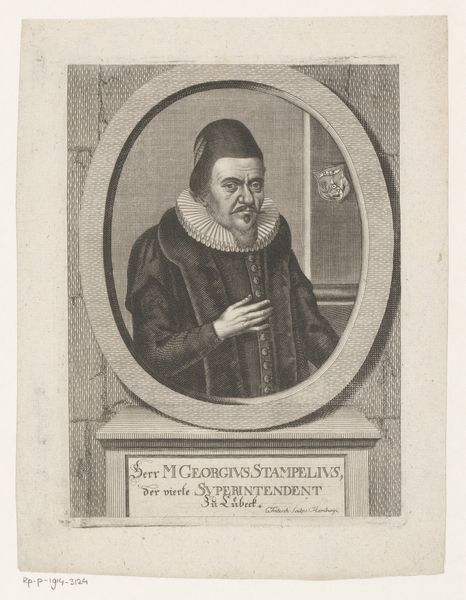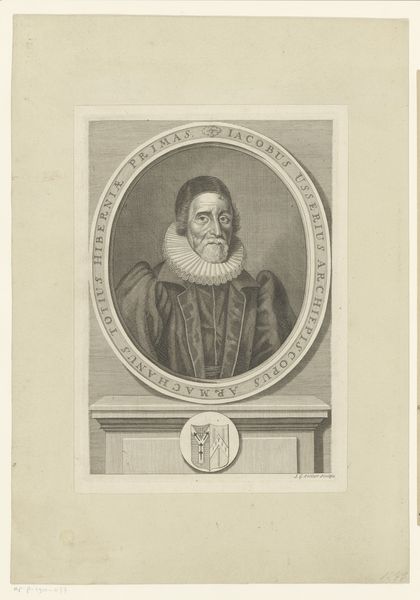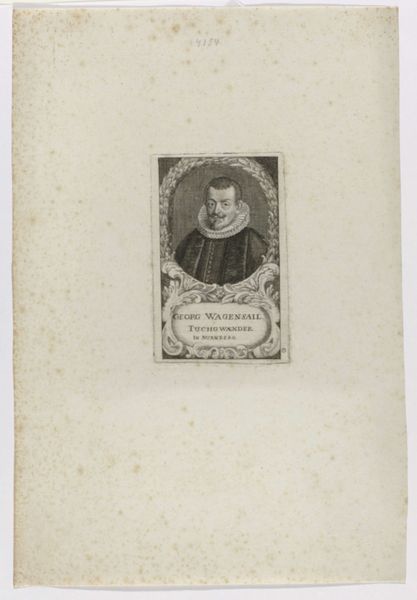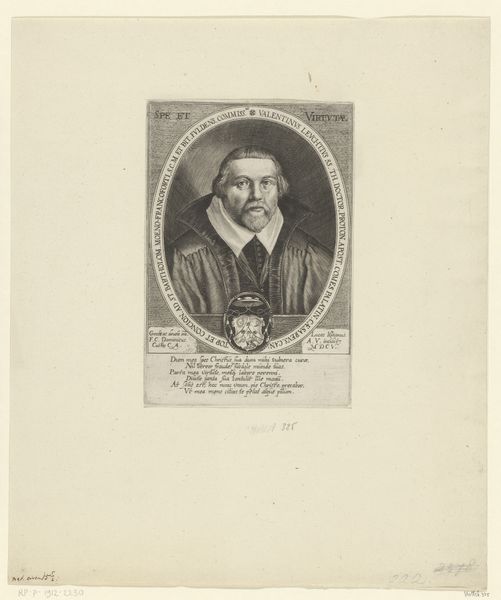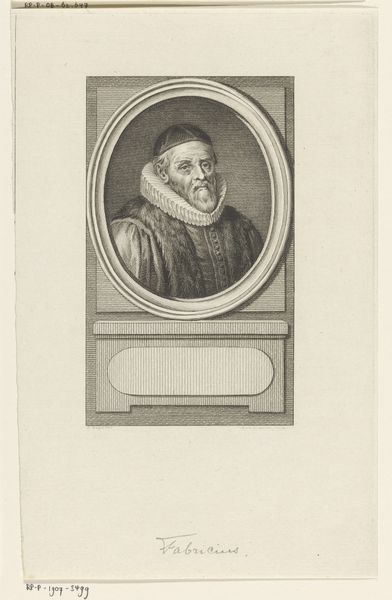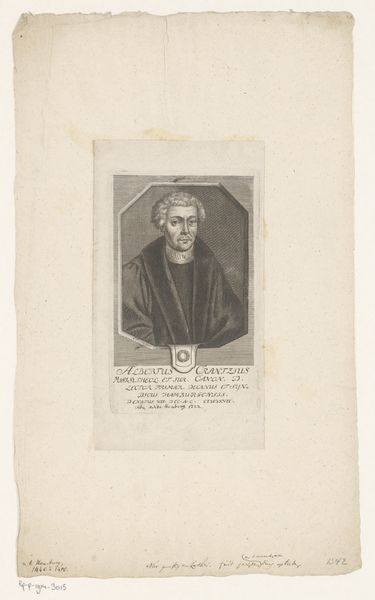
Dimensions: height 178 mm, width 118 mm
Copyright: Rijks Museum: Open Domain
Curator: This is Jacob Houbraken’s "Portrait of Johannes Cuchlinus," likely made between 1749 and 1796. It's currently held at the Rijksmuseum. Editor: It’s a beautiful print, the detail is incredible! There’s a real gravity to this portrait, a sense of importance. I’m curious, how does the historical context influence how we see this work today? Curator: The Baroque period loved portraiture, right? But more specifically, Houbraken created these prints often for books; consider how the printing press, how accessibility, shifted power. This isn't a painting for a wealthy family's private collection; it's meant to be disseminated. We’re looking at the rise of the public intellectual, in a way. Editor: So, by printing it, it gains another role, being more publicly visible and influential? Curator: Precisely. The printing medium democratizes it. Who had access to this image? And more interestingly, why were they granted this access? It was probably bound and sold alongside texts, perhaps sermons of Cuchlinus. In this context, how does that shape your understanding of it? Editor: That makes me see it in a new light! It becomes less about individual artistry and more about the spread of ideas, particularly religious and intellectual ones during the Enlightenment. I guess I always looked at portraits as being about status, and now it seems so much more about disseminating a specific message. Curator: Exactly! By focusing on its distribution, we begin to question the intended audience and how it impacted the socio-political climate. It also prompts to question how an artwork that used to hold social and cultural power can transform and democratize over time and history. Editor: That's so insightful! I'll definitely look at portraits differently from now on, considering their role in public discourse rather than just as status symbols. Thank you.
Comments
No comments
Be the first to comment and join the conversation on the ultimate creative platform.
